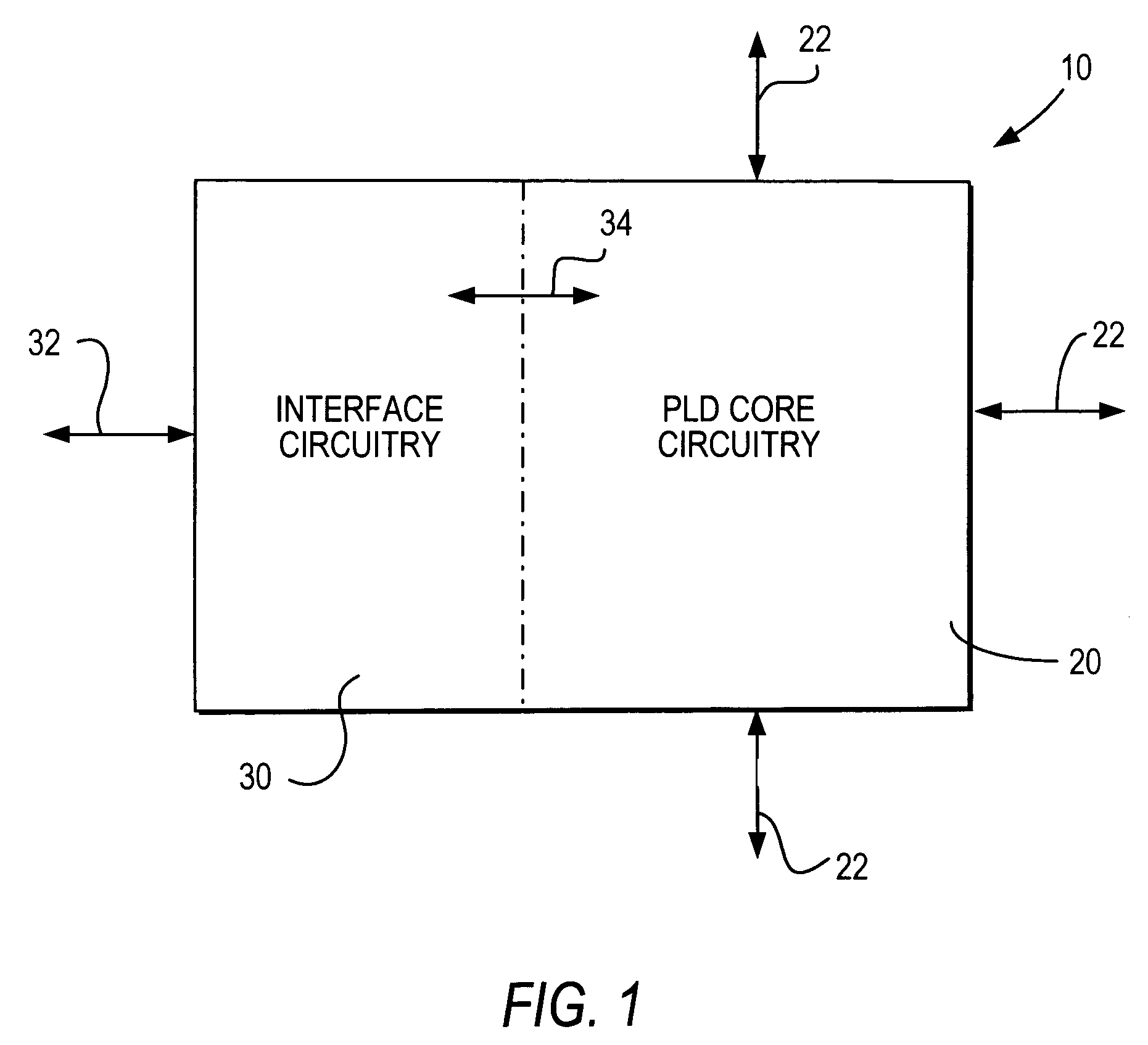Programmable logic devices with multi-standard byte synchronization and channel alignment for communication
a programmable logic and channel alignment technology, applied in the direction of computation using denominational number representation, instruments, pulse techniques, etc., can solve the problems of allowing relatively large amounts of skew (relative signal transmission delay) among those channels, and it is difficult to envision circuitry that can support both. to achieve the effect of facilitating the use of programmable logic circuitry
- Summary
- Abstract
- Description
- Claims
- Application Information
AI Technical Summary
Benefits of technology
Problems solved by technology
Method used
Image
Examples
Embodiment Construction
[0024]Interface circuitry capable of supporting a wide range of 8B10B communication protocols is shown in commonly assigned, co-pending, Lee et al. U.S. patent application Ser. No. 10 / 093,785, filed Mar. 6, 2002 (now U.S. Pat. No. 6,650,140), which is hereby incorporated by reference herein in its entirety. In certain of its aspects the present invention relates to adding to the circuitry shown in the Lee et al. disclosure capability to alternatively support various POS-5-type communication protocols. (As mentioned above, all such protocols that are generally like POS-5 are referred to herein simply as POS-5 protocols.) The circuitry shown herein makes use of many components that are either the same as or similar to components shown and described in the above-mentioned Lee et al. disclosure. Because those components are already fully described in the Lee et al. disclosure, it will not be necessary to repeat all of those details here. The same is true for the details of the 8B10B com...
PUM
 Login to View More
Login to View More Abstract
Description
Claims
Application Information
 Login to View More
Login to View More - R&D
- Intellectual Property
- Life Sciences
- Materials
- Tech Scout
- Unparalleled Data Quality
- Higher Quality Content
- 60% Fewer Hallucinations
Browse by: Latest US Patents, China's latest patents, Technical Efficacy Thesaurus, Application Domain, Technology Topic, Popular Technical Reports.
© 2025 PatSnap. All rights reserved.Legal|Privacy policy|Modern Slavery Act Transparency Statement|Sitemap|About US| Contact US: help@patsnap.com



